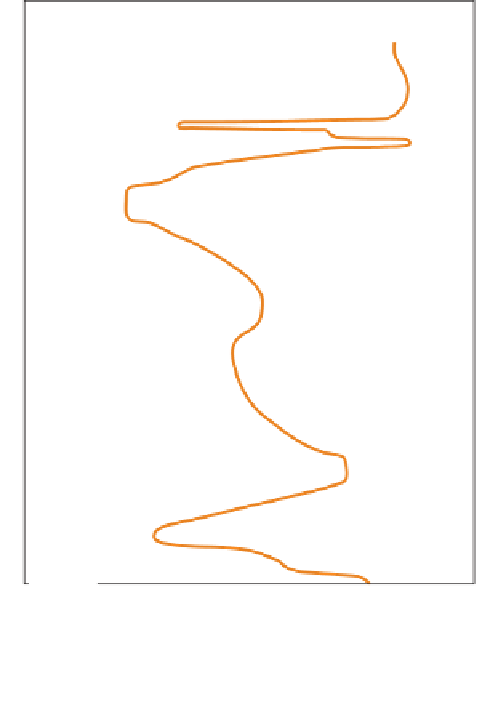Geoscience Reference
In-Depth Information
had higher lake levels. Evaporation and earth movements
also affect lake levels, as well as precipitation, so climatic
interpretation is not always easy. In monsoon areas there
was a stronger circulation with heavier rainfall and even
the drier areas of the Middle East had wetter conditions
that would favour early agriculture. The Sahara is an
example of wetter conditions before 6000
BP
. There is
considerable evidence from palaeolake levels, pollen
reconstructions and archaeology that during the first part
of the Holocene much of the Sahara was well vegetated,
with freshwater lakes, abundant fauna, and well populated.
Such changes were not uniform globally. For example,
in the Altiplano of the Peruvian Andes and the lower,
desert regions of northern Chile conditions were drier
between 8000
BP
and 9000
BP
and around 4000
BP
.In
general, the thermal maximum was followed by a period
of slowly declining temperatures and fluctuations in
precipitation.
Within the general cooling after 5000
BP
there were
cooler periods such as around 2,000 years ago and warmer
ones, for example about
AD
1000 to 1200. At that time
there were few severe winter storms in the Atlantic. The
Vikings took advantage of this quieter period to colonize
Iceland and Greenland and probably visited North
America. By
AD
1200 cooling began to set in, with in-
creased storminess (
Figure 9.5
).
In at least four major sea
floods of the Dutch and German coasts in the thirteenth
century the death toll was estimated at more than 100,000.
At the same time, drought was starting to affect Native
American settlements in Iowa and South Dakota, but in
parts of China moister conditions prevailed. An increase
in the strength of the westerly circulation in the northern
hemisphere has the effect of decreasing precipitation to
the lee of the western cordillera of the United States but
can lead to an increase where jet streams converge after
splitting around the Tibetan plateau, so the differences are
not contradictory.
Arctic
Sub-
Boreal
Temperate
Today
10ka
C
. 25ka
C
. 40ka
C
. 120ka
British Isles for the last 120,000 years.
Source: After Jones and Keen (1993)
high latitudes. On the basis of tree cover evidence, average
summer temperatures in mid-latitudes of the northern
hemisphere are believed to have been 2-3°C warmer than
those of today; the thermal maximum was reached about
5,000 years ago. Lake levels in tropical areas indicate moist
conditions in the early part of this postglacial period, with
a general decline in levels subsequently. Evidence from
Australian lakes is more variable, with high lake levels
during the glacial maximum in parts of New South Wales,
but in coastal Victoria it was the postglacial period that
Figure 9.5
Proxy-based
reconstruction of global
temperature changes since
AD
200. The observational
record begins in the
mid-nineteenth century.
Source: Compiled from Mann and
Jones (2003) and Bradley (2003)
<HDU$'





































































